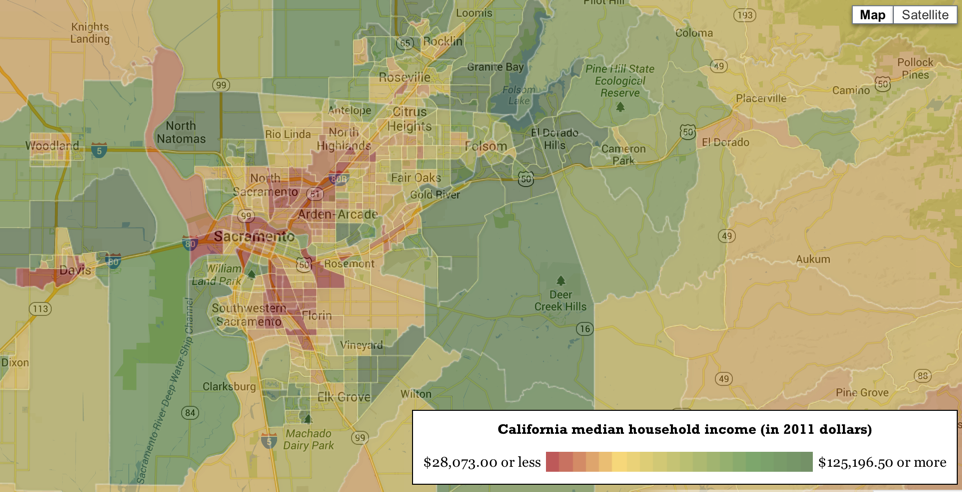The Scent of the City
/A year ago, when Sacramento's city staff presented the council with an analysis of the proposed giveaway to the new owners of the Kings, I wondered why it paled, in economic sophistication and concern for the public interest, beside a similar analysis performed for the Maloof family. We now know the answer: Corruption.
In a deposition given in the lawsuit that citizens have filed against the giveaway, James Rinehart, the city's economic development director, testified that the city's staff has made no effort to analyze the economic effect of the subsidy or weigh it against the potential benefits of alternative uses of the money. In fact, Rinehart admitted he had never seen the giveaway term sheet and was unaware of any effort by the city to place a value on the non-cash assets—land, parking spaces, digital signage rights—it proposes to throw into the deal.
Hiram Johnson
So how did the city staff report come to conclude that the giveaway "would have multiple benefits to the City"? Documents discovered in the lawsuit show that those claims of benefits were invented by the subsidy seekers themselves, e-mailed to the city, and, by the magic of cut and paste, placed into the staff report, where the city's elected leaders and the public were defrauded into believing they were reading the considered judgment of the professionals of government. When the city staff spoke, the welfare seekers' lips moved.
If you think this kind of thing is par for the course in government, you're wrong. As a deputy treasurer for the state of California, sitting on boards and financing authorities and overseeing staff work on behalf of the treasurer, I watched professional public servants test the claims of organizations seeking state financing and tax credits and analyze the potential risks and benefits to the public. Their scrutiny was applied routinely and across the board, even to projects and financings three or four orders of magnitude smaller than the proposed Kings giveaway, which at over $300 million, is roughly equivalent to an entire year's worth of pay and benefits for Sacramento's city workforce. For the past three decades I've often seen Sacramento's city council bend to the wishes of the developers, downtown property owners, and unions whose dollars dominate city politics. But until now, the city staff, under honest professionals like former city manager Bill Edgar, usually played things straight.
But the evidence collected thus far in the lawsuit shows that the city management's sins go beyond playing ventriloquist dummy to those looking to boost $300 million out of taxpayer pockets. Staff is also actively obstructing the public's right to know. Councilmember Kevin McCarty testified that he repeatedly asked staff for a valuation of the "sweeteners" the city was throwing at the Kings' superrich owners but was consistently rebuffed. "You're not going to vote for it anyway," McCarty said the staff told him.
This, too, is misconduct. In my time at the State Treasurer's Office, many of California's financing authority boards comprised three officials running for governor: Phil Angelides, Steve Westly, Arnold Schwarzenegger. But in their frequent jockeying and disputes, I can't remember a single instance of the professional staff's withholding requested information from an elected official, even when doing so might result in a different policy result than they or their boss sought. When such things happen in state government, as when parks officials failed to report all their revenue to the governor's finance department, it was rightly considered a scandal.
A century ago Progressives successfully pushed many American cities to adopt the city-manager form of government as an antidote to corruption. The idea was that professional civil servants, disinterested and armed with the social science and economic knowledge coming out of the newly burgeoning universities, would be a source of honest, efficient government. Cities would be freed from the handouts and special deals for politically connected businesses that bribed politicians and financed their campaigns and political organizations. Reform would protect the many against the few.
But Progressives did not imagine what is unfolding in Sacramento: professional managers marching in lockstep with wealthy boodle seekers; ignoring principles of sound public finance; rejecting expert knowledge showing the economic infectiveness of sports subsidies; putting special-interest spin into official reports to masquerade as professional analysis; depriving the public and elected officials of a full accounting of their sweetheart deals; even going so far as to try to frustrate Sacramento citizens' use of the very tools of direct democracy that the Progressive created as the bulwark against special interest giveaways and corrupt government.
The state of the city is fragile: Public services and budgets not recovered five years after the end of the recession. High levels of debt and unfunded liabilities, of violent crime and poverty. Low levels of job growth and the college-educated workers vital to future growth.
But the scent of the city? Ripe with a stench that Hiram Johnson, the reformer, and Lincoln Steffens, the muckraking journalist, would have smelled in their youth in Sacramento—so ripe that maybe the people paid to report on and police these things might even begin to notice again.




